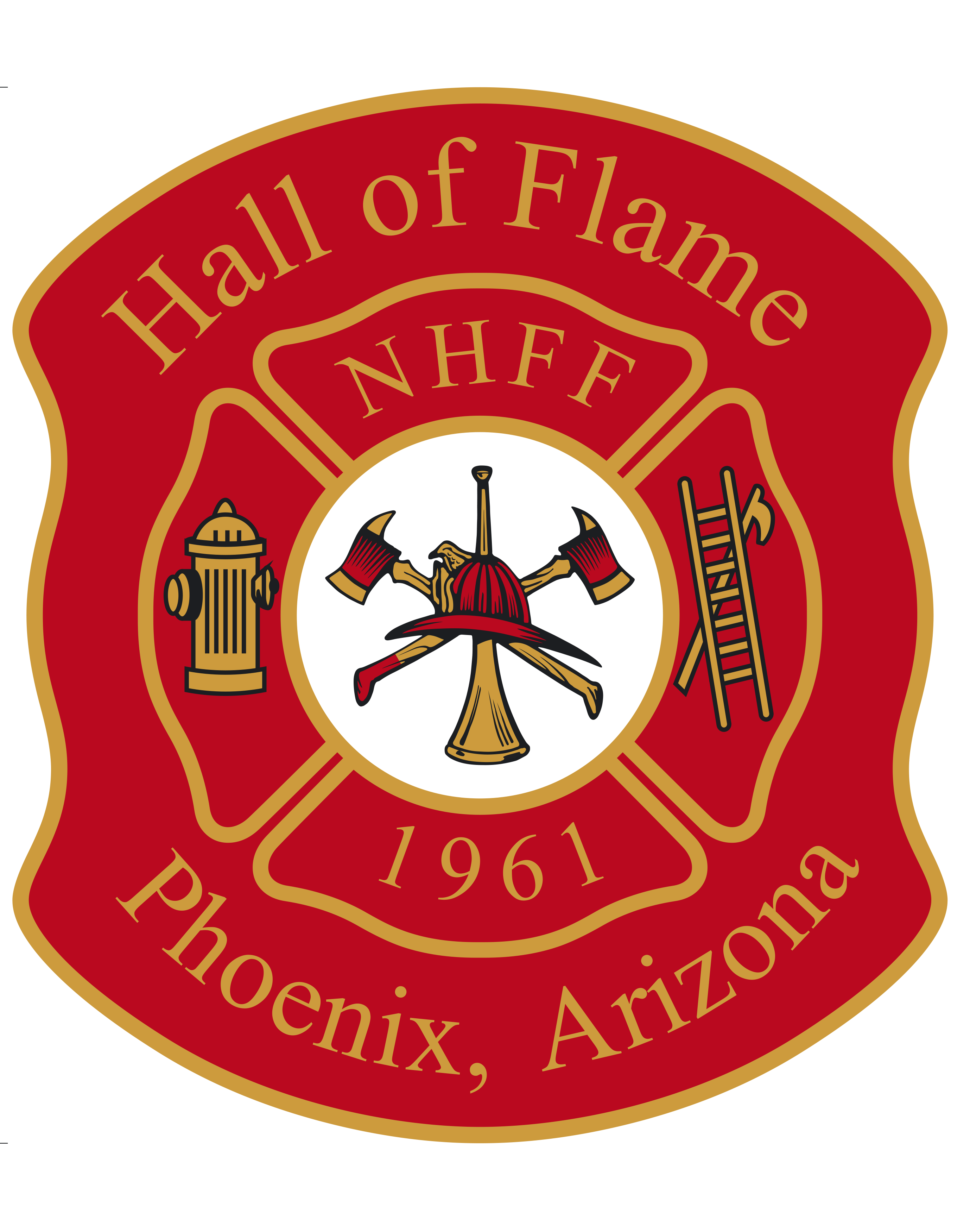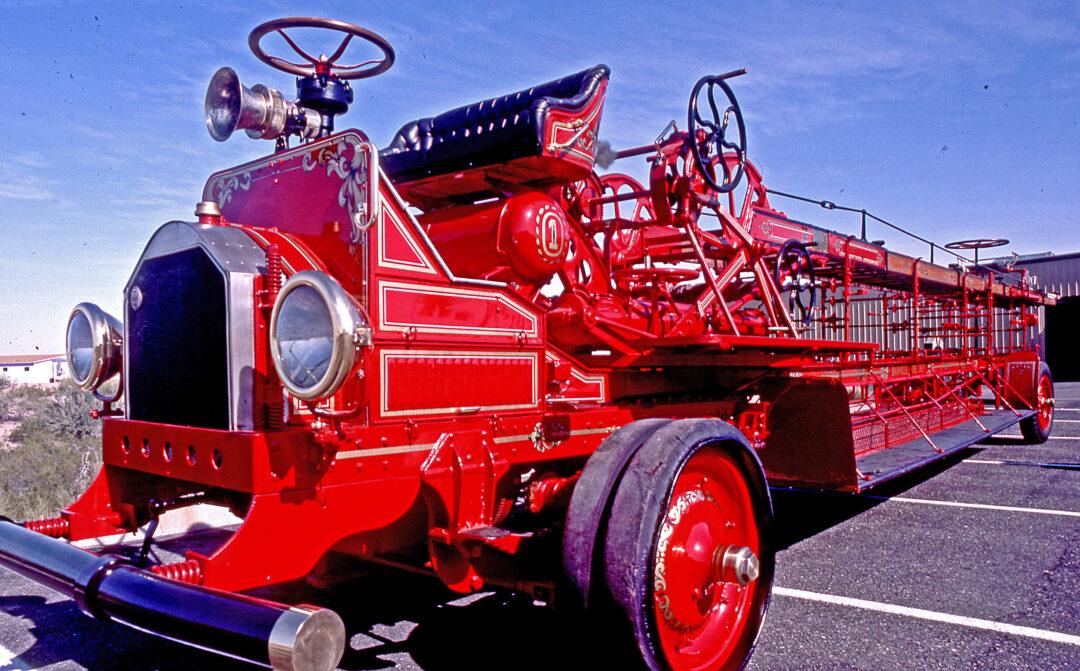Asa La France patented the design for this “spring assist” aerial in 1903. Originally built to be pulled by horses, the design was adapted to motorized tractors and was manufactured until about 1940. Because of its long wheel base it is steered from both the front and rear. The “tiller man” turns his wheel in the opposite direction of the truck’s driver, providing impressive mobility for such a large vehicle. Many modern aerial trucks still employ a tiller man.
It uses two large helical springs to elevate the ladder to the vertical position. Every action after that is performed by hand. At a fire the “tiller man” removed his steering wheel and placed it to the side. He then stood on the end of the ladder as it was lifted skyward by the expanding springs. The rig’s crew then turned the cranks to extend the ladder to its 75 foot length and rotate it on its turntable. The tiller man was now in position to enter a burning building to search for victims or to rescue people waiting in windows for rescue. He might also climb from the ladder onto a roof to chop a hole and “ventilate” the fire, allowing smoke and hot air to escape. In other cases the tiller man would connect a length of 2 ½ inch hose to the “ladder pipe” mounted at the aerial’s tip. He could then play as much as 250 gallons of water per minute onto a fire.
This rig was built for the town of Danville, Illinois. It could make rescues in buildings up to six stories high. It also saw service in Cairo, Illinois until about 1960. It was restored in 1986 by Don Hale.

